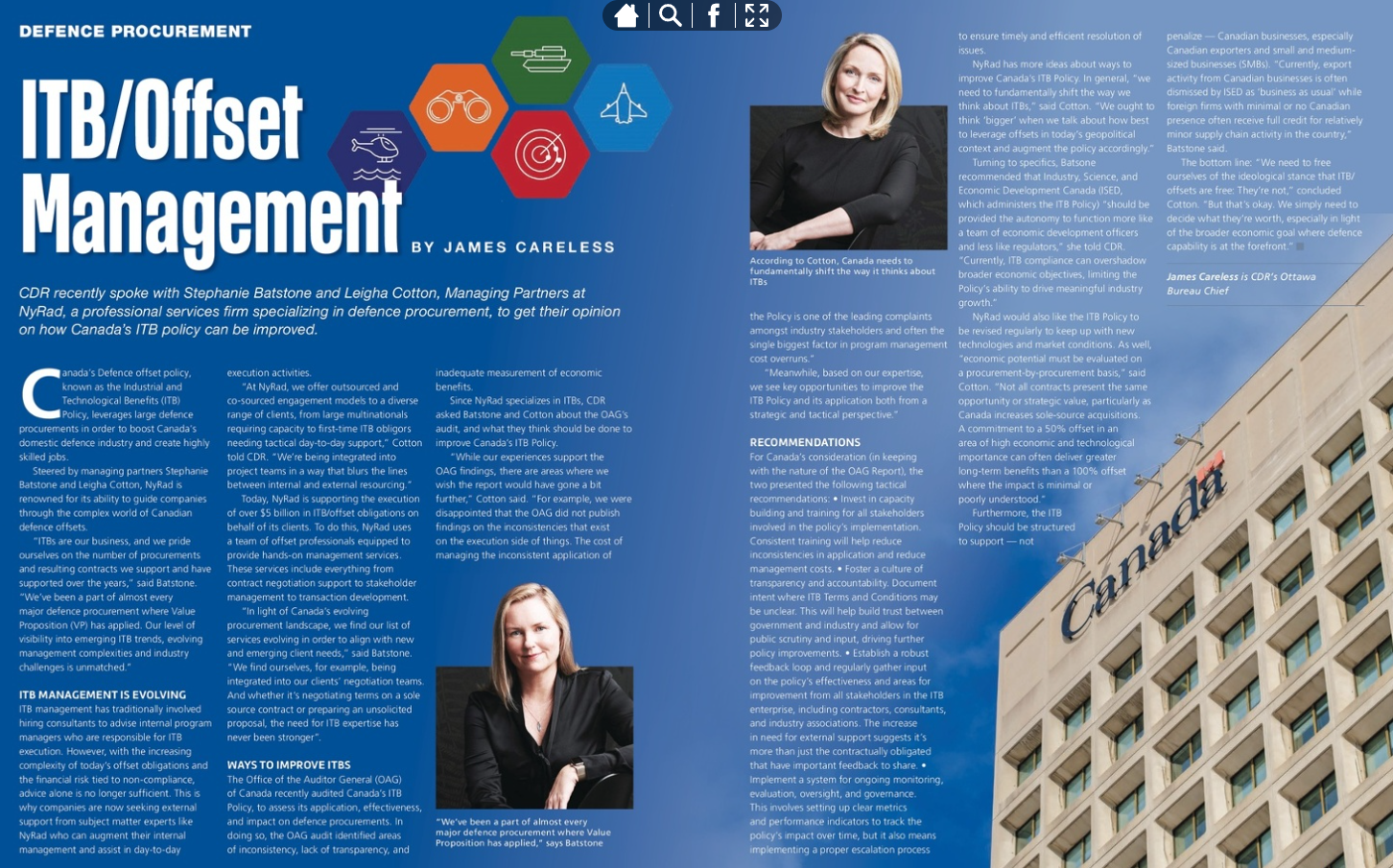The Inconsistencies of the Investment Framework 5-year Rule
Investment Framework (IF) Transactions refers to the mechanism under Canada’s ITB Policy whereby an ITB Obligor invests in an R&D project with a Canadian Small or Medium sized Business (SMB) and receives a crediting multiplier on the investment. IF transactions provide one of the highest multipliers within the ITB Policy at nine times (9x), making them a popular transaction type for companies with significant ITB obligations. The ITB Terms and Conditions (Ts&Cs) require IF transactions to “have a duration of at least five continuous years, beginning at the date the investment is made…”. The Ts&Cs also state that “the entire investment must remain with the SMB for at least five continuous years and be used for the purposes outlined in the business plan in order for credit to be awarded each year.”
In NyRad’s experience, this “5-year rule” is subjectively interpreted by Innovation Science and Economic Development (ISED) ITB Managers, creating confusion and inconsistency for ITB Obligors who want to use IF transactions as a way to fulfill their obligations. In this article, we will examine three interpretations of this rule and the challenges that Contractors face as a result.
Interpretation #1: The R&D project must last five years
Some ISED ITB Managers interpret the 5-year rule to mean that the R&D project itself must span over a five-year period, regardless of when the investment is made or when the credits are claimed. This is not realistic for several reasons. First, the definition of R&D in the Ts&Cs includes late-stage product development and testing. These processes are typically shorter and more agile than those used in basic or applied research. Second, the level of investment put forward for IF transactions is often less than $1M and R&D projects of this size do not typically take five years to complete. Third, innovation is fast moving, and market driven, and Contractors need to respond to changing customer needs and competitive pressures. The outcome of a five-year R&D project risks being obsolete or irrelevant before it is finished.
Interpretation #2: The multiplied credits must be spread over five years.
Other ISED ITB Managers have interpreted the rule to mean that the multiplied credits for IF must be granted over a five-year timeframe, regardless of how long the R&D project takes to complete. While this might work for contracts with very long achievement periods, such as 10 or 15 years, ISED is applying the R&D Value Proposition Pillar to procurements with much shorter achievement periods (sometimes 5 or 6 years). In these instances, the Achievement Period precludes using IF unless the investment is made on day-one of the Contract. This is not possible for many reasons. First, Contractors need time to identify suitable R&D partners and projects that align with their strategic objectives and capabilities. Second, Contractors need to negotiate and finalize the terms of the investment with the R&D partner, which may involve legal and financial due diligence. Third, Contractors need to obtain approval from ISED for the IF transaction, which may take several months. And finally, some Contractors have limited cash flow in the early phases of a contract, preventing them from making investments in R&D projects until later into contract execution.
Interpretation #3: The multiplied credits are applied when the investment is made.
Some ISED ITB Managers ignore the 5-year rule altogether and simply apply the multiplied credit when/as the investment is made. This is the most favorable scenario for Contractors, as it allows them to use IF transaction flexibly and efficiently, without worrying about timing issues. However, this approach also contradicts the Ts&Cs and creates inconsistency contract to contract.
The 5-year rule and its inconsistent application introduce uncertainty and stand in misalignment with the objective of supporting innovation through the ITB Policy. Therefore, we recommend that ISED consider revising or removing this rule in the next version of the ITB Terms and Conditions. Removing the 5-year rule would better enable Canadian Small and Medium Sized Businesses to access private-sector investment funding through the ITB Policy. It would also add more predictability into the Policy for ITB Obligors facing a multitude of investment considerations, not least of which include cash flow, timelines, and project outcomes. Having to wait 5 years for ITB credit on a 6-month R&D project should not be an investment consideration, and certainly not a barrier to investing.
At NyRad, we make it a priority not only to know the ITB Terms and Conditions and how they are applied today, but also to understand the Canadian government’s intent behind each of the terms underpinning the ITB Policy. When it comes to the five-year rule, we simply do not understand Canada’s intent and unfortunately, we’re not alone. Given confusion exists both across Industry and government, we see it as an area of the Policy that needs clarification at a minimum and perhaps a full reconsideration.
You May Also Be Interested In...

Editorial: ITB/Offset Management -How Canada’s ITB Policy Can Be Improved
Excited to share that NyRad is featured in the latest edition of the Canadian Defence Review.


